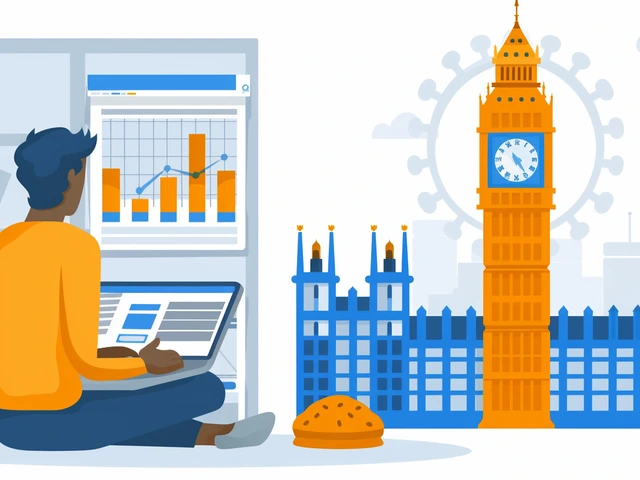Affiliate Marketing Earnings Calculator
Estimate your potential monthly earnings based on traffic volume and average commission rate.
Quick Overview
- Affiliate marketing lets you earn commissions by promoting other people’s products.
- Pick a niche, join the right Affiliate Network (a platform that connects merchants with affiliates), and start driving traffic.
- Three main payment models: pay‑per‑sale, pay‑per‑lead, pay‑per‑click.
- Combine SEO, content marketing, and email to build a sustainable funnel.
- Track every click with a Tracking Cookie (a small file that records user actions for attribution) and optimize for higher Commission Rate (the percentage or flat fee you earn per conversion).
What is Affiliate Marketing (a performance‑based channel where affiliates earn commissions for driving sales or leads to a merchant)?
In simple terms, you act as a middleman. A Merchant (the product or service owner who wants more customers) supplies you with a unique referral link. When someone clicks that link and completes the desired action-buying a product, signing up for a newsletter, or downloading an app-you receive a pre‑agreed payout.
Because you never handle inventory, customer support, or shipping, the model scales well for anyone with a laptop and an internet connection.
Core Components of a Successful Affiliate Business
Every profitable operation shares the same building blocks. Below is a quick cheat‑sheet of the essential entities, each marked up for search‑engine friendliness.
- Affiliate (the marketer who promotes offers and earns commissions)
- Affiliate Network (platform that hosts multiple merchants and provides tracking tools)
- Merchant (Advertiser) (brand or company offering products for affiliates to promote)
- Referral Link (unique URL containing an identifier for attribution)
- Landing Page (the page a visitor lands on after clicking your link; can be the merchant’s site or a custom review page)
- Tracking Cookie (stores click data for a set period, enabling commission attribution)
- Commission Rate (percentage or flat amount paid per conversion)
- Payment Model (how the merchant compensates affiliates: CPA, CPS, CPC, etc.)
Choosing the Right Payment Model
Not all offers are created equal. Your choice depends on your traffic quality, niche, and risk tolerance.
| Model | How You Earn | Typical Commission | Best For |
|---|---|---|---|
| Pay‑Per‑Sale (PPS) | Earn a % of each sale you refer | 5‑30% | High‑ticket products, stable traffic |
| Pay‑Per‑Lead (PPL) | Earn a flat fee for each qualified lead | $1‑$50 per lead | Finance, SaaS trials, insurance |
| Pay‑Per‑Click (PPC) | Earn a small amount per click | $0.05‑$2 per click | High‑volume, low‑margin niches |
For beginners, pay‑per‑sale offers are usually the safest bet because they reward real purchases, not just clicks.
Building Your First Campaign: Step‑by‑Step
- Pick a niche you enjoy. Passion makes content creation easier and keeps you honest when reviewing products.
- Research profitable offers. Use the Affiliate Network search filters to find high‑commission products with good EPC (earnings per click).
- Sign up and get your Referral Link. Most networks generate a unique ID automatically.
- Create a content hub. A blog post, video review, or email sequence that solves a problem and naturally slots your link.
- Drive traffic. Combine free methods (SEO, social sharing) with paid ads if your budget allows.
- Monitor performance. Log clicks, conversions, and revenue in a spreadsheet or dedicated tracker.
- Optimize. Test headlines, call‑to‑actions, and landing page layouts. Small tweaks can raise conversion rates by 10‑30%.

Traffic Sources That Convert
Relying on a single channel is risky. Here’s a mix that works for most affiliates.
- SEO (Search Engine Optimization): Target long‑tail keywords like "best eco‑friendly garden tools review". Rankings may take 3‑6 months, but the traffic is evergreen.
- Content Marketing: Publish how‑to guides, comparison tables, and case studies. The more value you provide, the higher the click‑through rates.
- Email Marketing: Build a list with a lead magnet (e.g., free ebook). Nurture subscribers with personal recommendations and include your Referral Link in relevant newsletters.
- Social Media: Platforms like Instagram Reels or TikTok let you showcase products in action. Use swipe‑up or bio links to capture clicks.
- Paid Advertising: If you have a modest budget, test low‑cost traffic on Google Display or Facebook. Keep CPA below your expected commission to stay profitable.
Optimizing for Higher Commission Rate
Not all programs pay the same. Here are proven tactics to boost your earnings.
- Negotiate tiered rates. Some merchants increase the % after you hit a sales threshold.
- Promote recurring‑billing products (e.g., SaaS). You earn a commission each month the customer stays.
- Bundle offers. Pair a primary product with an upsell that also carries a commission.
- Focus on high‑margin niches (finance, health, B2B software) where merchants can afford larger payouts.
Tracking, Analytics, and Compliance
Data is the lifeblood of any affiliate operation.
- Use a dedicated Tracker (software that records clicks, conversions, and revenue) like Voluum or ClickMeter.
- Set up UTM parameters on all links to separate traffic sources in Google Analytics.
- Check cookie duration. Longer windows (30‑90 days) increase the chance you’ll capture delayed purchases.
- Stay compliant with FTC disclosure rules. A simple "I may earn a commission if you click my link" statement protects you legally.
Common Pitfalls & How to Avoid Them
- Choosing a saturated niche. Instead of "weight loss", aim for "vegan keto snacks for athletes"-specific yet sizable.
- Promoting low‑quality products. Bad experiences ruin trust and lower future click‑through rates.
- Ignoring data. If a page has high traffic but low conversions, rewrite the copy or test a new call‑to‑action.
- Over‑reliance on a single merchant. Diversify across at least three programs to protect income.
Scaling Your Affiliate Business
Once you hit a steady $1,000‑$2,000 per month, it’s time to think bigger.
- Outsource content creation. Hire freelance writers to produce SEO‑optimized posts, freeing you to focus on strategy.
- Build a private network. Create your own landing‑page hub and sell ad space to other affiliates.
- Automate reporting. Use Zapier to push tracker data into Google Sheets, then generate weekly performance emails.
- Invest in paid traffic. With proven ROI, allocate a larger budget to campaigns that consistently beat your CPA target.
Frequently Asked Questions
Do I need a website to start affiliate marketing?
A full site isn’t mandatory, but having a blog or landing page boosts credibility and SEO. Many beginners start with a YouTube channel or social media profile, then add a site once they see steady traffic.
How much can I realistically earn in the first year?
Earnings vary wildly. With consistent effort, a realistic range is $2,000‑$10,000. Top performers who specialize and scale can exceed $50,000, but that usually requires multiple income streams and paid traffic.
Is it safe to use affiliate links on social media?
Yes, as long as you disclose the partnership. Platforms like Instagram now require you to tag affiliate posts, and Facebook’s policy mandates a clear "ad" or "sponsored" label.
What’s the difference between CPA and CPS?
CPA (Cost‑Per‑Action) pays when a predefined action-like a sign‑up or form submission-occurs. CPS (Cost‑Per‑Sale) pays only when a sale is completed. CPA often has lower payouts but higher conversion chances.
How do I stay compliant with FTC regulations?
Add a brief disclosure near each affiliate link, such as "I may earn a commission if you purchase through this link." Keep it clear, conspicuous, and in the same font size as surrounding text.




Write a comment